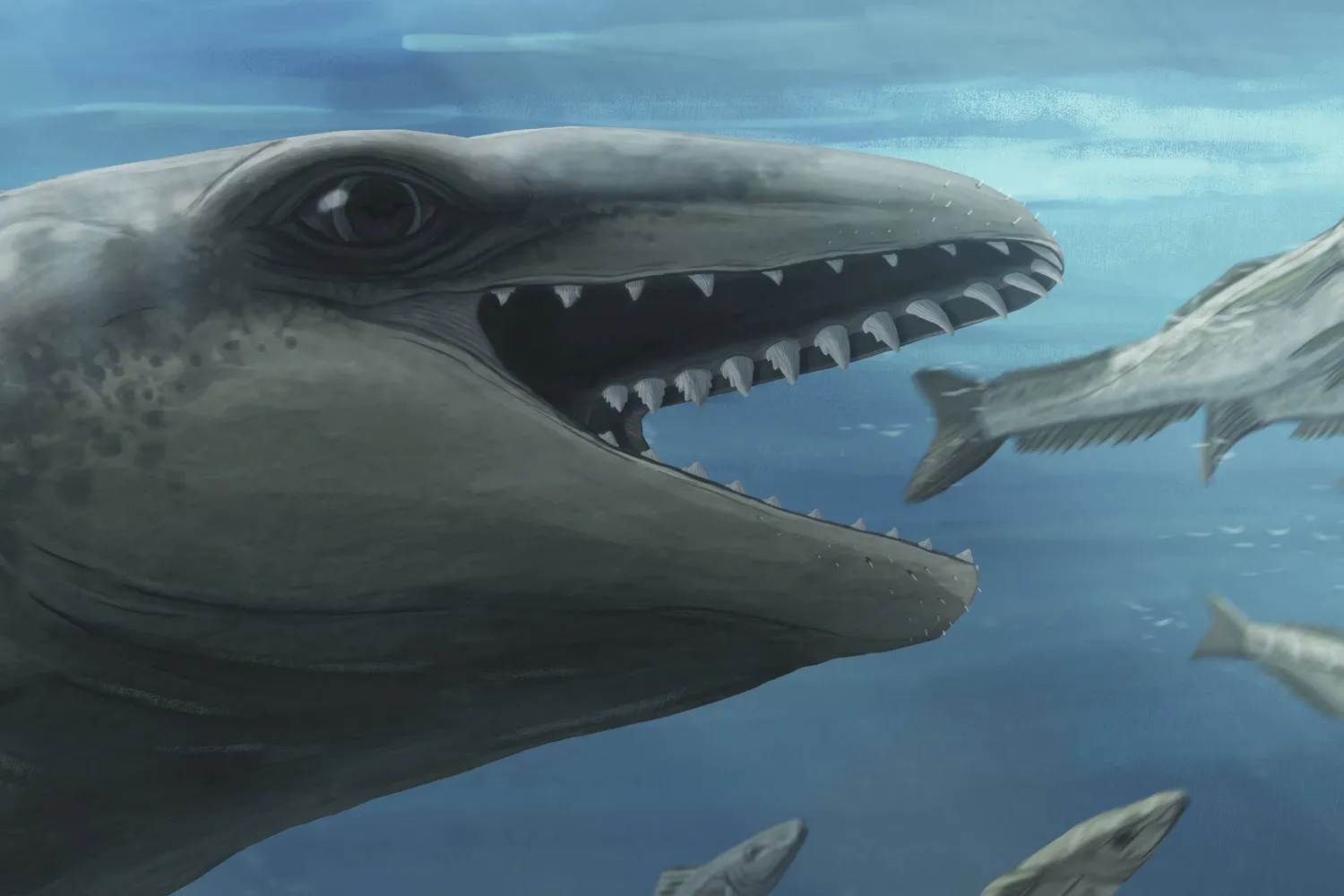Long before whales were majestic, gentle giants, some of their prehistoric ancestors were tiny, weird and feral. A chance discovery of a 25 million-year-old fossil on an Australian beach has allowed paleontologists to identify a rare, entirely new species that could unlock mysteries of whale evolution, The Associated Press reported.
Researchers this week officially named Janjucetus dullardi, a cartoonish creature with bulging eyes the size of tennis balls, in the Zoological Journal of the Linnean Society. Unlike today's whales, the juvenile specimen was small enough to fit in a single bed.
Boasting fiendish teeth and a shark-like snout, however, this oddball of the ocean was nasty, mean and built to hunt.
“It was, let’s say, deceptively cute,” said Erich Fitzgerald, senior curator of vertebrate paleontology at Museums Victoria Research Institute, and one of the paper's authors.
“It might have looked for all the world like some weird kind of mash-up between a whale, a seal and a Pokémon but they were very much their own thing.”
Extinct species was an odd branch on the whale family tree The rare discovery of the partial skull, including ear bones and teeth, was made in 2019 on a fossil-rich stretch of coast along Australia’s Victoria state. Jan Juc Beach, a cradle for some of the weirdest whales in history, is becoming a hotspot for understanding early whale evolution, Fitzgerald said.
Few family trees seem stranger than that of Janjucetus dullardi, only the fourth species ever identified from a group known as mammalodontids, early whales that lived only during the Oligocene Epoch, about 34 to 23 million years ago.
That marked the point about halfway through the known history of whales.
The tiny predators, thought to have grown to 3 meters (10 feet) in length, were an early branch on the line that led to today’s great baleen whales, such as humpbacks, blues and minkes. But the toothy ancestors with powerful jaws would have looked radically different to any modern species.
“They may have had tiny little nubbins of legs just projecting as stumps from the wall of the body,” said Fitzgerald.
That mystery will remain tantalizingly unsolved unless a specimen is uncovered with more of its skeleton intact, which would be something of a miracle. Even the partial skull that allowed the initial identification this week was an astonishing discovery.
For an amateur paleontologist, a life-long obsession paid off Janjucetus dullardi was named by researchers after an amateur fossil hunter who doesn’t mind its looks in the slightest.
“It’s literally been the greatest 24 hours of my life,” said Ross Dullard, who discovered the skull while fossil hunting at Jan Juc Beach. After Wednesday’s confirmation of the new species, the school principal walked like a rock star onto campus with “high fives coming left, right and center,” he said.
His friends and family are probably just relieved it’s over.
“That’s all they’ve heard from me for about the last six years,” he said.
Dullard was on a regular low-tide hunt at Jan Juc the day he spotted something black protruding from a cliff. Poking it dislodged a tooth.
He knew enough to recognize it was unlikely to belong to a dog or a seal.
“I thought, geez, we’ve got something special here,” he said. Dullard sent photos to Museums Victoria, where Fitzgerald saw them and immediately suspected a new species.
Ancient whale finds are rare but significant Confirming the find was another matter. This was the first mammalodontid to be identified in Australia since 2006 and only the third on record in the country.
Fossils of sufficient quality, with enough of the right details preserved to confirm uniqueness, aren’t common.
“Cetaceans represent a fairly miniscule population of all life,” Fitzgerald said. Millions of years of erosion, scavengers and ocean currents take their toll on whale skeletons too.
“It’s only the chosen few, the vast minority of all whales that have ever lived and died in the oceans over millions of years, that actually get preserved as fossils,” he added.
Finds such as Janjucetus dullardi can unlock insights into how prehistoric whales ate, moved, behaved — and evolved. Researchers said the discoveries also helped to understand how ancient cetacean species adapted to warmer oceans, as they study how today’s marine life might respond to climate change.
Meanwhile, Dullard planned to host a fossil party this weekend, featuring cetacean-themed games and whale-shaped treats in jello, to celebrate his nightmare Muppet find, finally confirmed.
“That’s taken my concentration for six years,” he said. “I’ve had sleepless nights. I’ve dreamt about this whale.”







